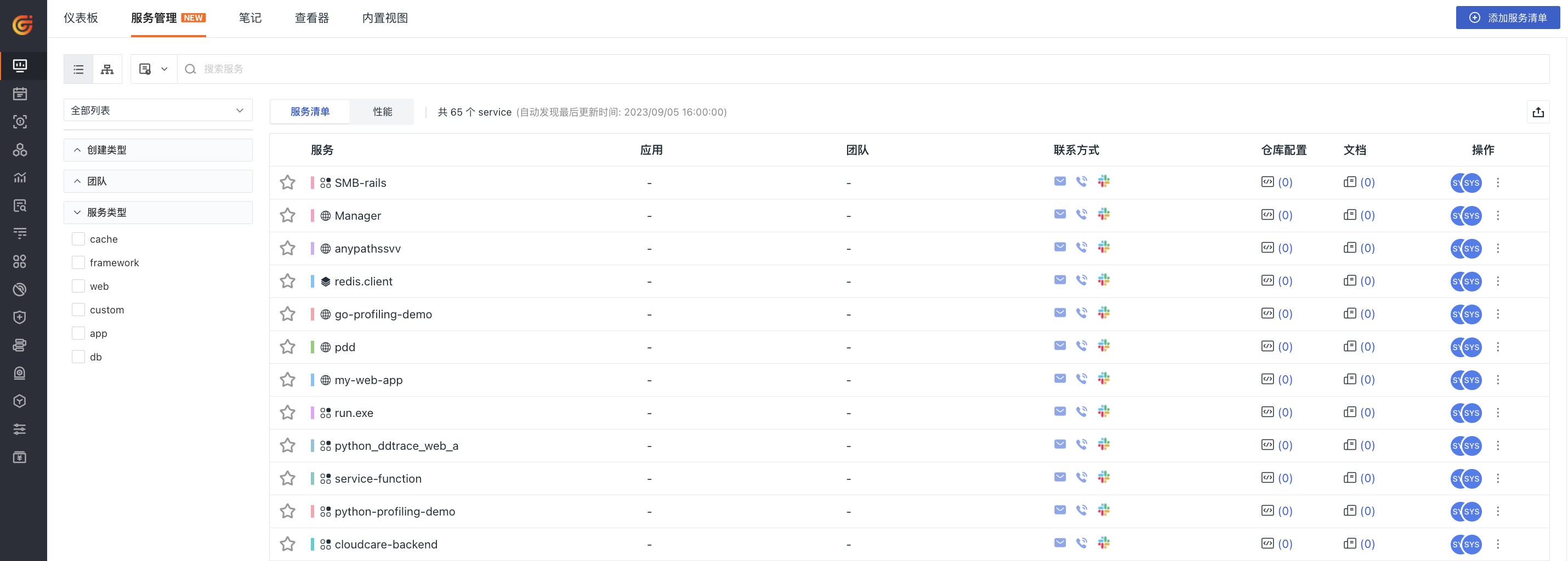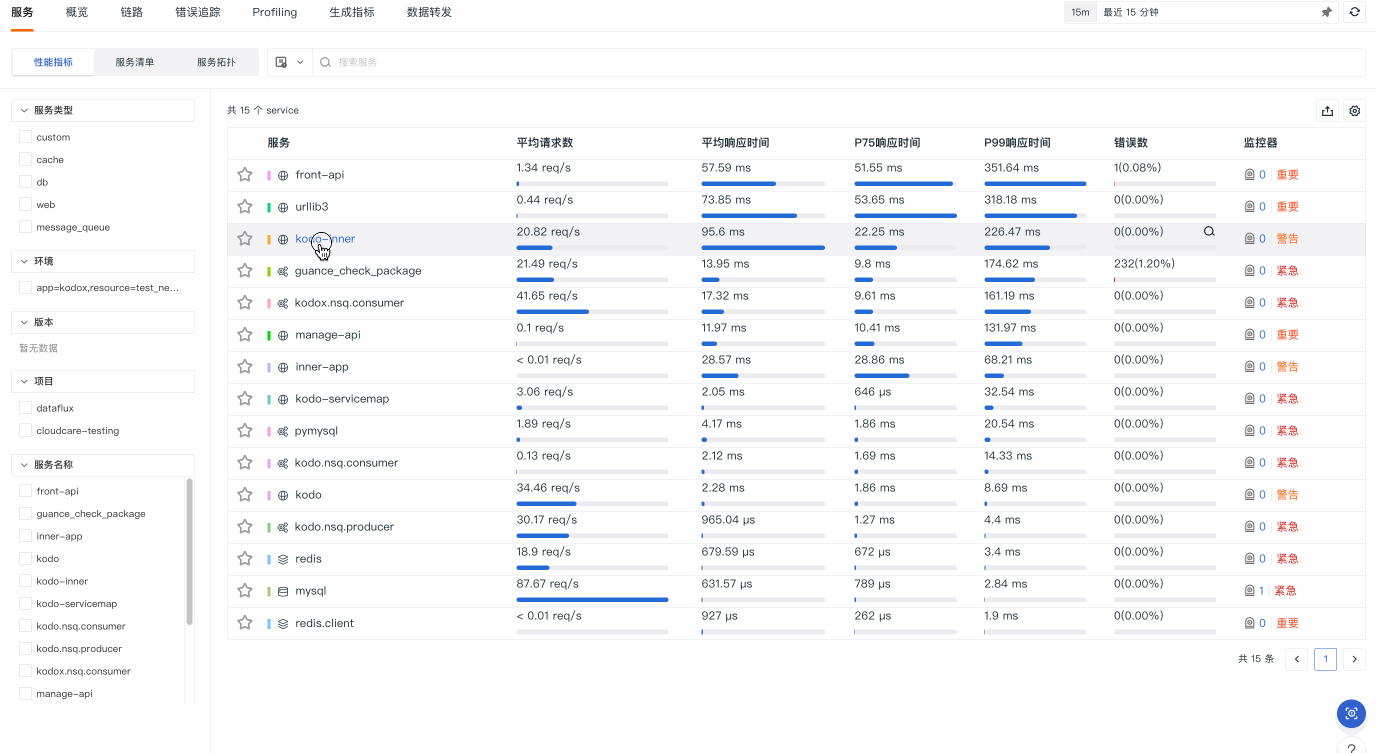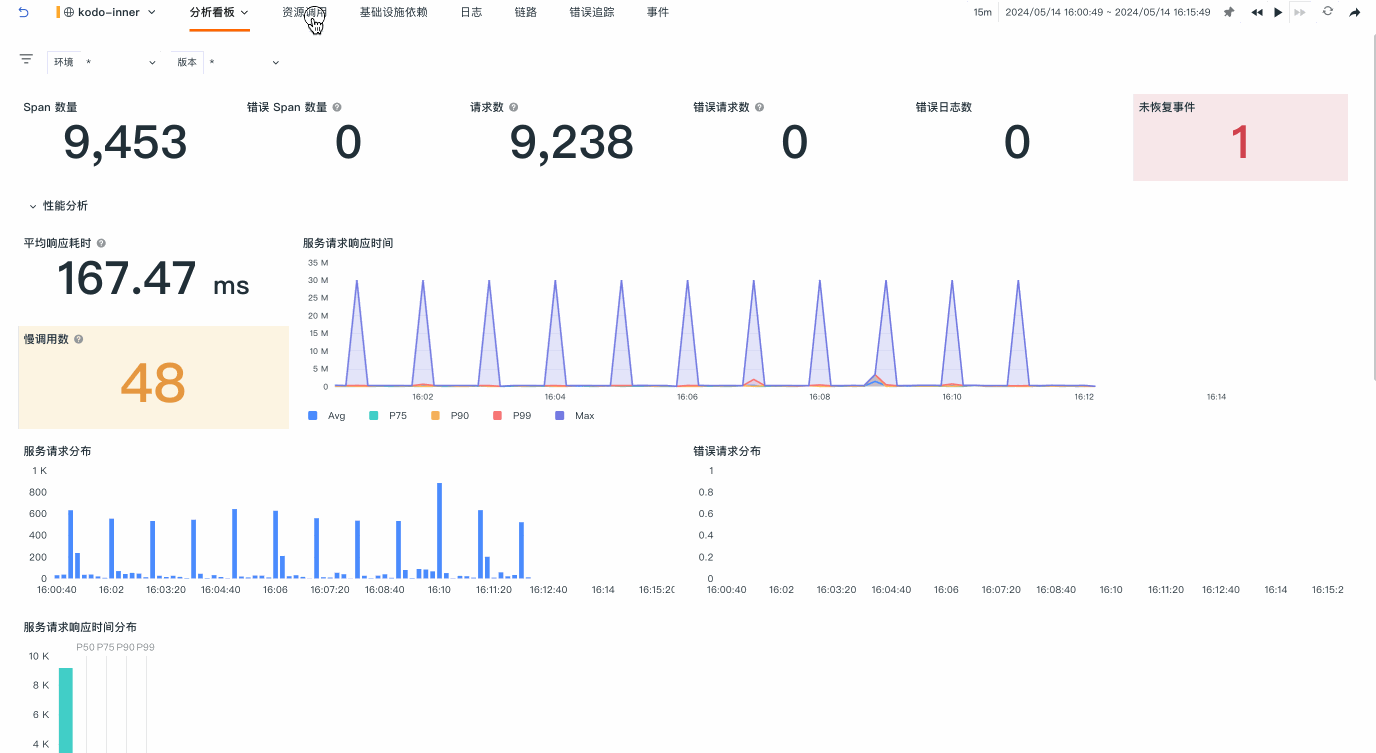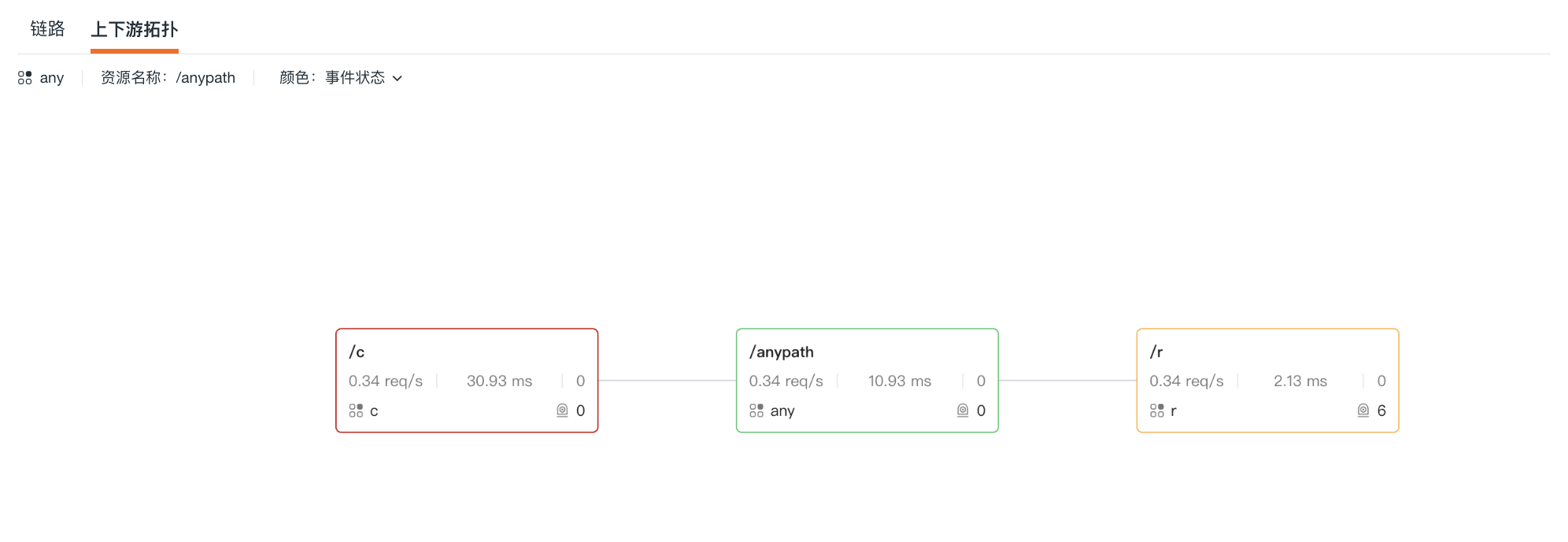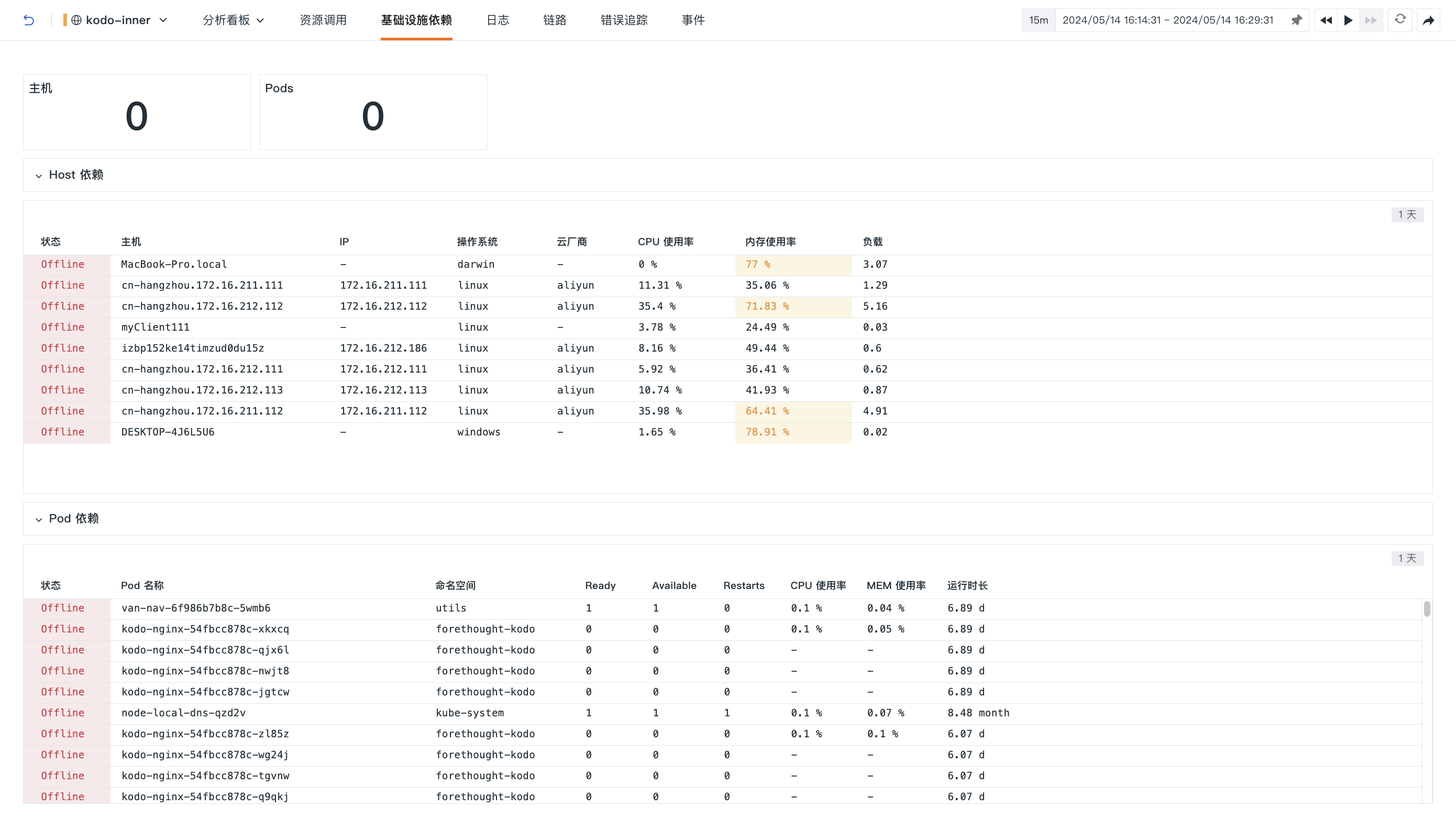Service Management¶
Service Management serves as a centralized management entry point, providing a global perspective to access and view key information of all services within the current workspace. At the same time, it connects business attributes with trace data, quickly identifying code locations and solutions for urgent issues through associated repositories and documentation.
Under Application Performance Monitoring > Service Management, you can add service lists as needed. After adding, viewing is supported across three dimensions: performance metrics list, service list, and service topology map. On the corresponding list pages, you can quickly locate the target service list using global filtering, quick filtering, search, and time widgets, thereby reducing query time; you can also save snapshots to record query conditions at any time. Guance provides multiple settings and actions to meet service data query requirements.
Service Details¶
In each service list, clicking on a service leads you to its details page. Clicking on the tabs at the top of the page allows you to enter analysis dashboards, resource calls, infrastructure dependencies, logs, traces, error tracking, and event explorer to query all relevant information about associated services.
If you need to switch to another service detail, simply click the current service icon; in the window that opens, you can directly input keywords to search:
Analysis Dashboard¶
The overview page of the analysis dashboard is opened by default. If you have associated built-in views when creating or editing a service, you can switch views accordingly:
Resource Calls¶
Under Resource Calls, Guance displays the ranking of resource calls, showing detailed information about the top-ranked resources on the right side of the page by default. This includes request count, error rate, response time, response time distribution, and their trace data. You can also globally filter based on environment and version. If there are no resource details available, Guance will display related data of this service on the right side of the page.
- The resource call rankings (Top 20) list supports analysis based on request count (default), error request count, requests per second, P75 response time, and P99 response time; you can sort the number of entries in the corresponding list.
- Hover over a resource and click the button on the right to copy the full name of the current resource.
- In the detail page on the right of the resource, you can view its request count, error rate, response time, and response time distribution.
- You can query associated trace information and support search; clicking Jump will take you to the Service Management > Trace page.
Upstream and Downstream Topology¶
On the detail page of the resource on the right, besides associated trace data, you can also view the upstream and downstream topology of the current resource.
On the upstream and downstream topology tab page, you can:
- Event status legend: from left to right, the color blocks represent: Data Gap, Information, Warning, Significant, Urgent, Normal.
- On the card, you can view average request rate, P99 response time, error request rate (request count), and associated monitors for each resource.
- Clicking the card allows you to view related logs, user accesses, and events; if the resource is associated with a monitor, you can jump to the corresponding monitor to view the monitor configuration and related events.
Infrastructure Dependencies¶
On this page, Guance presents to you in the form of a dashboard the number of hosts and Pods currently associated with the service and their corresponding lists.
Through the charts, you can quickly view information such as host and Pod names, statuses, CPU usage, memory usage, and MEM usage, promptly responding to risky indicators.
For operations related to dashboards, refer to Chart Settings.
Associated Explorers¶
| Click to go to other explorer tabs | |
|---|---|
| Log Explorer | Trace Explorer |
| Error Tracking Explorer | Event Explorer |
